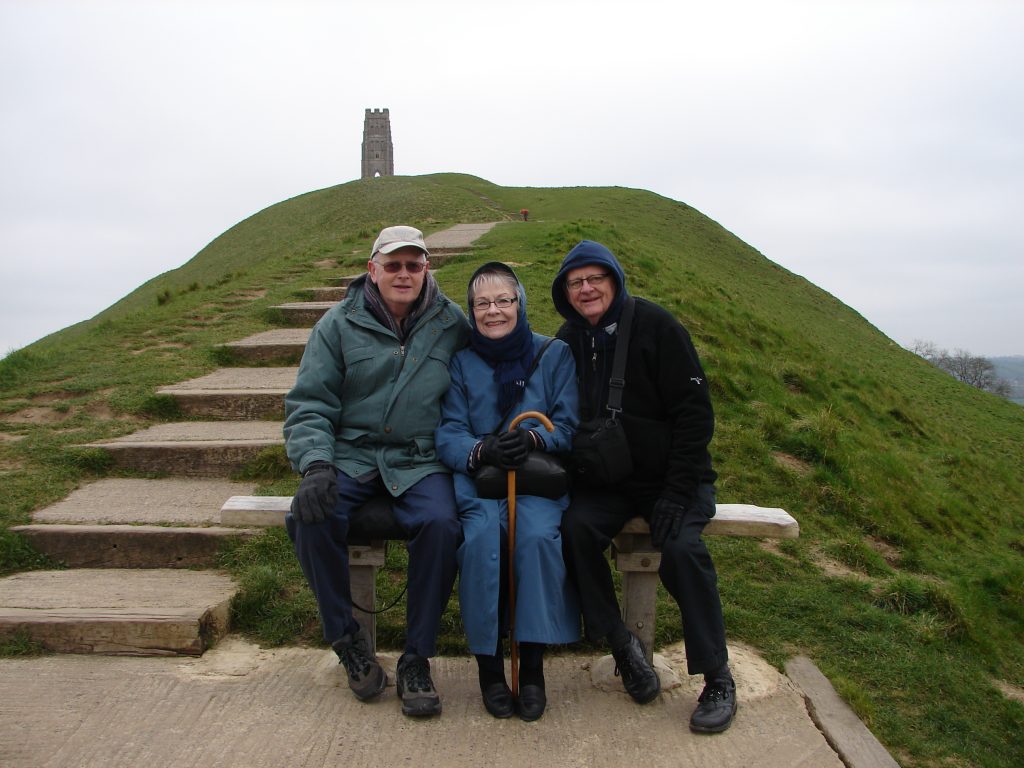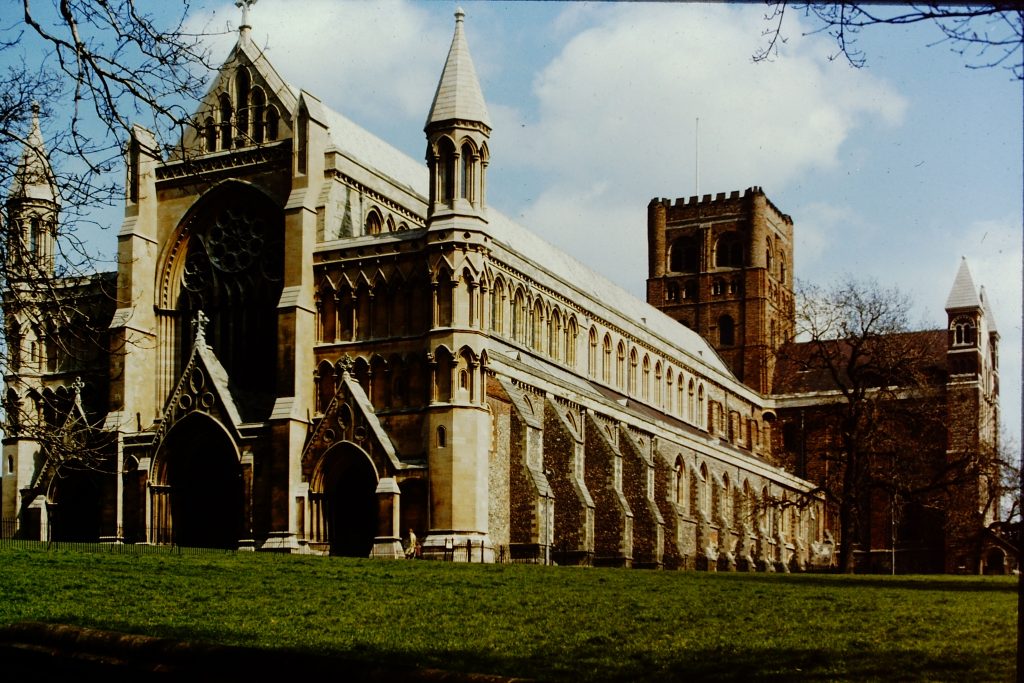Welcome, I am currently discussing the significance of the church in my West Country medieval mystery series featuring my heroine, the Lady Apollonia of Aust. Earlier in the year I spoke of prominent cathedral churches and important abbeys in my stories, and in the last four months, I discussed several lesser abbeys and priories in my first four books.
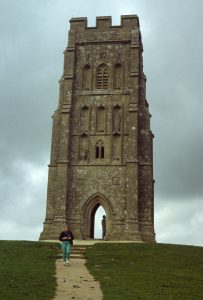 This month I will discuss other abbeys and priories that appear in my last three novels. Joseph of Arimathea’s Treasure, my fifth book, mentions Kingswood and Tintern Abbeys, about which I wrote in recent posts, but it also uses St. Michael’s Priory atop Glastonbury Tor as part of the main story. The picture at the top of the post shows me sitting on a bench with my husband, Lou, and Paul, one of my English cousins, after we had climbed toward the top of the Tor and the tower which is the only remaining part of the medieval priory. The picture on the left shows me standing in front of the tower on another occasion much closer to it.
This month I will discuss other abbeys and priories that appear in my last three novels. Joseph of Arimathea’s Treasure, my fifth book, mentions Kingswood and Tintern Abbeys, about which I wrote in recent posts, but it also uses St. Michael’s Priory atop Glastonbury Tor as part of the main story. The picture at the top of the post shows me sitting on a bench with my husband, Lou, and Paul, one of my English cousins, after we had climbed toward the top of the Tor and the tower which is the only remaining part of the medieval priory. The picture on the left shows me standing in front of the tower on another occasion much closer to it.
The Tor was a site of interest to pagan religions, but there is evidence of Christian activity on this site since the Saxon period. Four wooden buildings on this site at that time have been interpreted as a church and monk’s hermitage. The wooden church was destroyed by an earthquake in 1275 with a stone church replacing it in the 14th century. The tower still standing is from that stone church of St. Michael’s Priory which is thought to have been a daughter house to Glastonbury Abbey at the time of my story.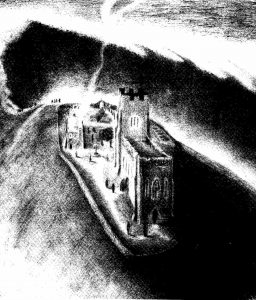
Except for the tower, the church was dismantled in the 16th century when King Henry VIII dissolved the monasteries where the last abbot of Glastonbury Abbey was murdered at the site of St. Michael’s. An artist’s drawing of the medieval priory is shown on the right.
My sixth novel, King Richard’s Sword, uses a fictitious abbey, St. Martinminster, as part of its story, and this abbey is described in my book as a daughter house to Halesowen Abbey. Halesowen was a real abbey which did have some daughter houses, but mine was fictitious.
King Richard’s Sword does mention a real abbey, St. Albans, the church of which survives today as St. Albans Cathedral. Although the church did not become a cathedral until the 19th century, it survived the Dissolution of the Monasteries as a parish church. It is unusual in that the Bishop of St. Albans is also the Rector of that parish. The photo below of the exterior of St. Albans emphasizes the nave. It is the longest nave in of any today’s cathedral churches in England.
St. Albans Abbey is mentioned in my story because Lady Apollonia arranges to send one of the characters, a boy named Elwin, to the scriptorium at St. Albans to enhance his future. St. Albans is named after Alban who lived in Roman Britain. He sheltered a priest fleeing persecution, was converted by that priest, then was killed by the Romans defending the priest, thus becoming Britain’s first Christian martyr.
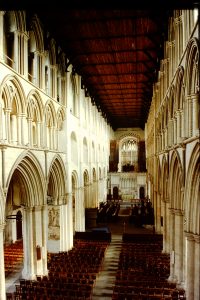 A monastery was founded at St Albans as early as 793. Work on a Norman church building began in 1073. The central tower of the present church is the oldest crossing tower still standing in England. The present church was completed over several centuries and includes much Gothic architecture. The picture on the left shows the nave where you can see a combination of round Norman arches toward the crossing with Gothic arches in the bays that were added later.
A monastery was founded at St Albans as early as 793. Work on a Norman church building began in 1073. The central tower of the present church is the oldest crossing tower still standing in England. The present church was completed over several centuries and includes much Gothic architecture. The picture on the left shows the nave where you can see a combination of round Norman arches toward the crossing with Gothic arches in the bays that were added later.
Next time I hope to talk about saints, their relics, and the importance of pilgrimage in my stories. Hope to see you then!
